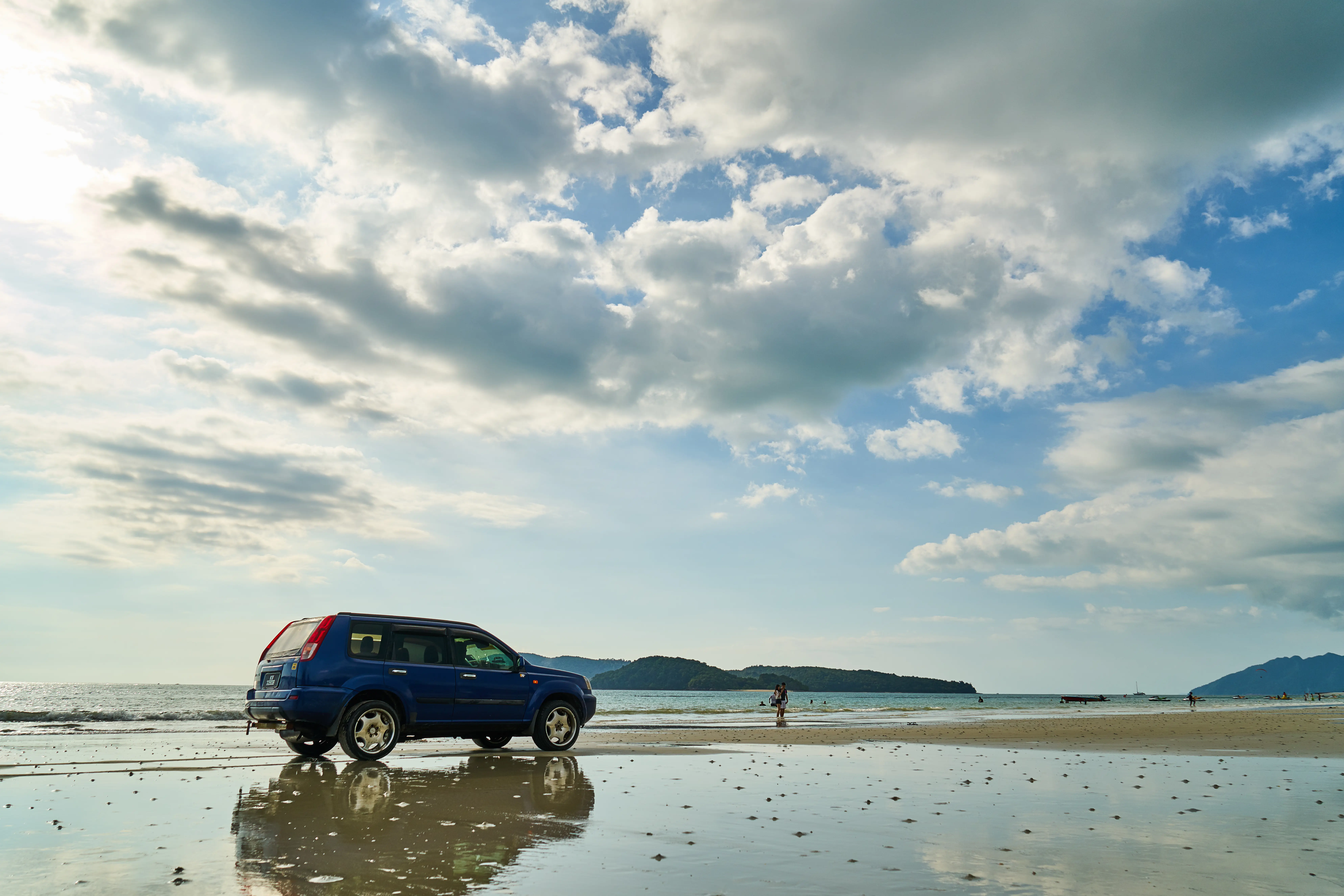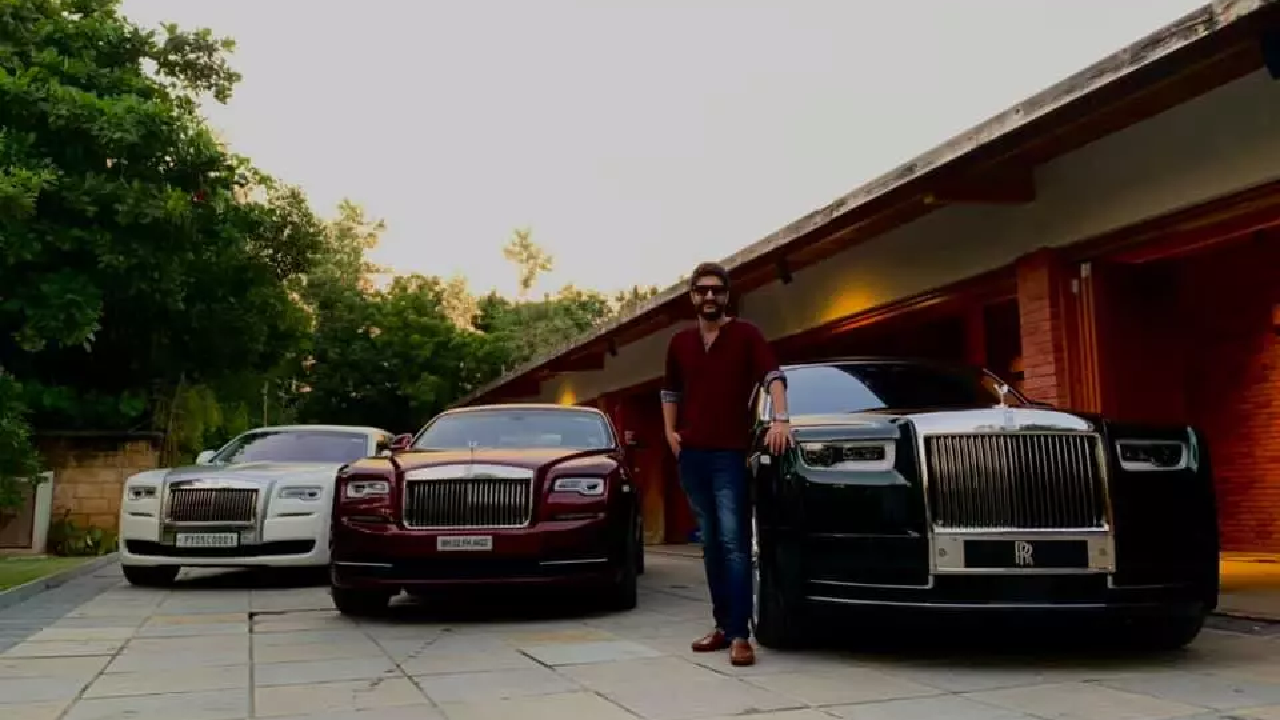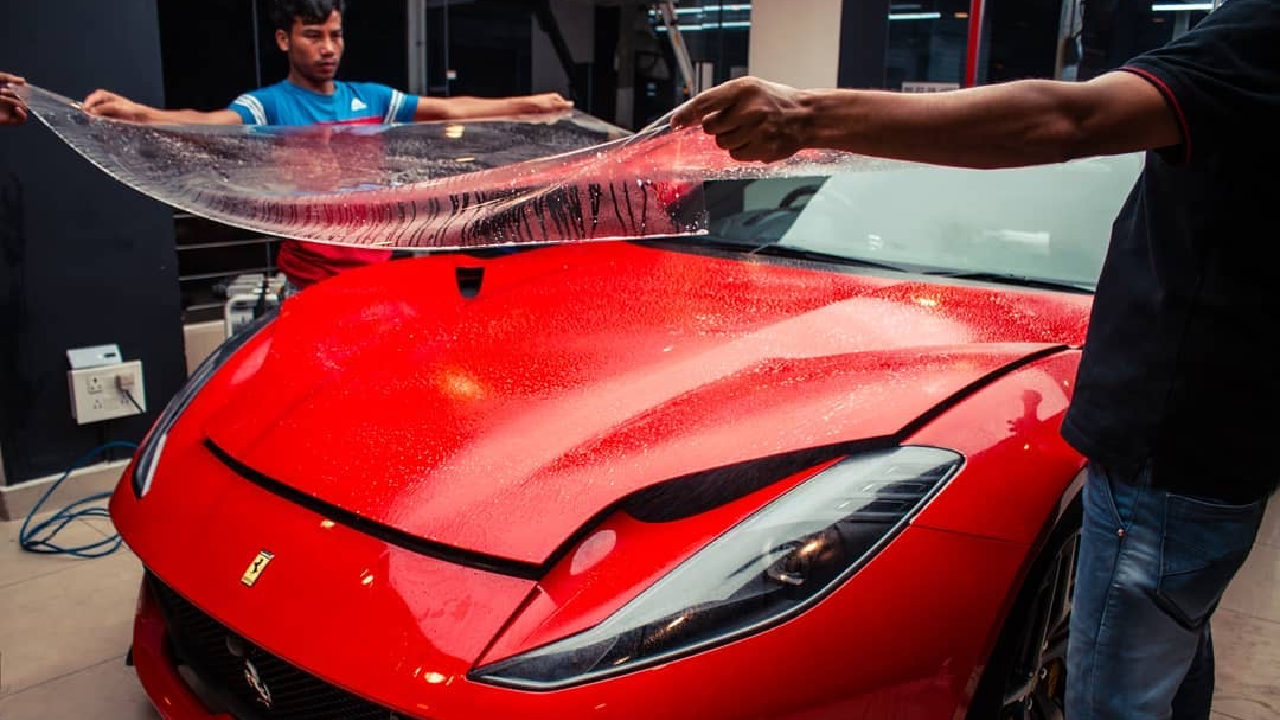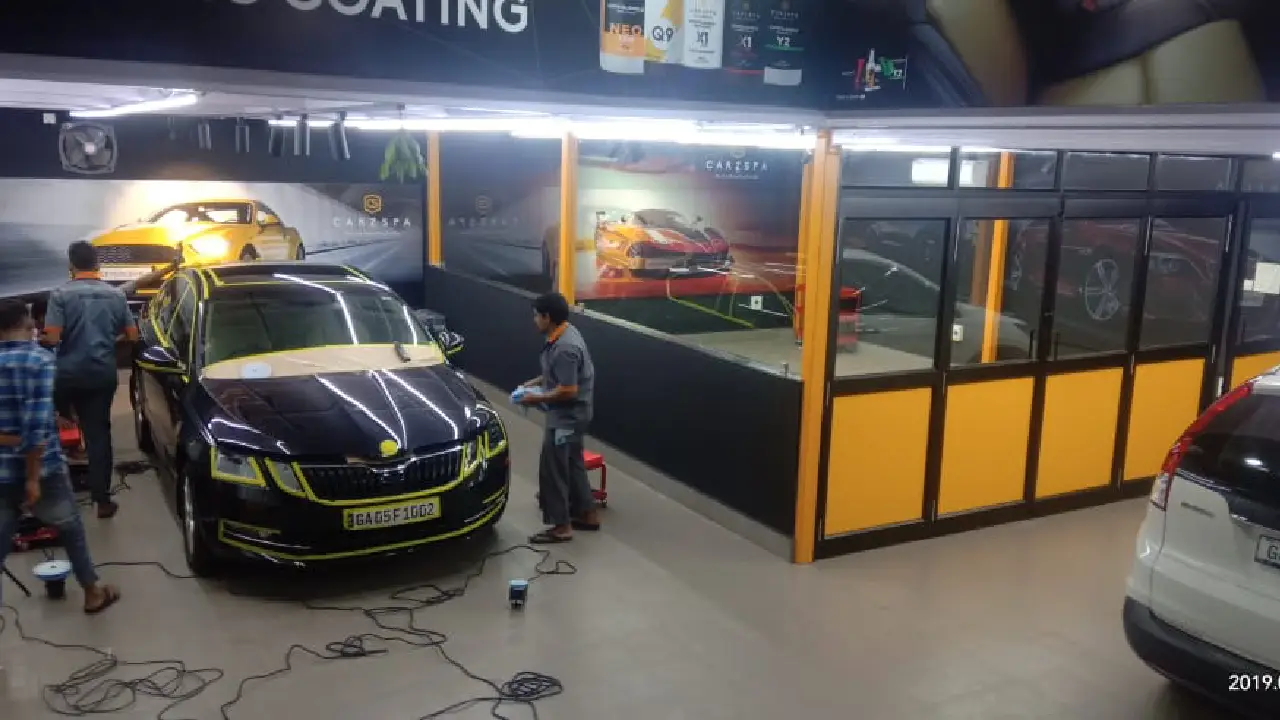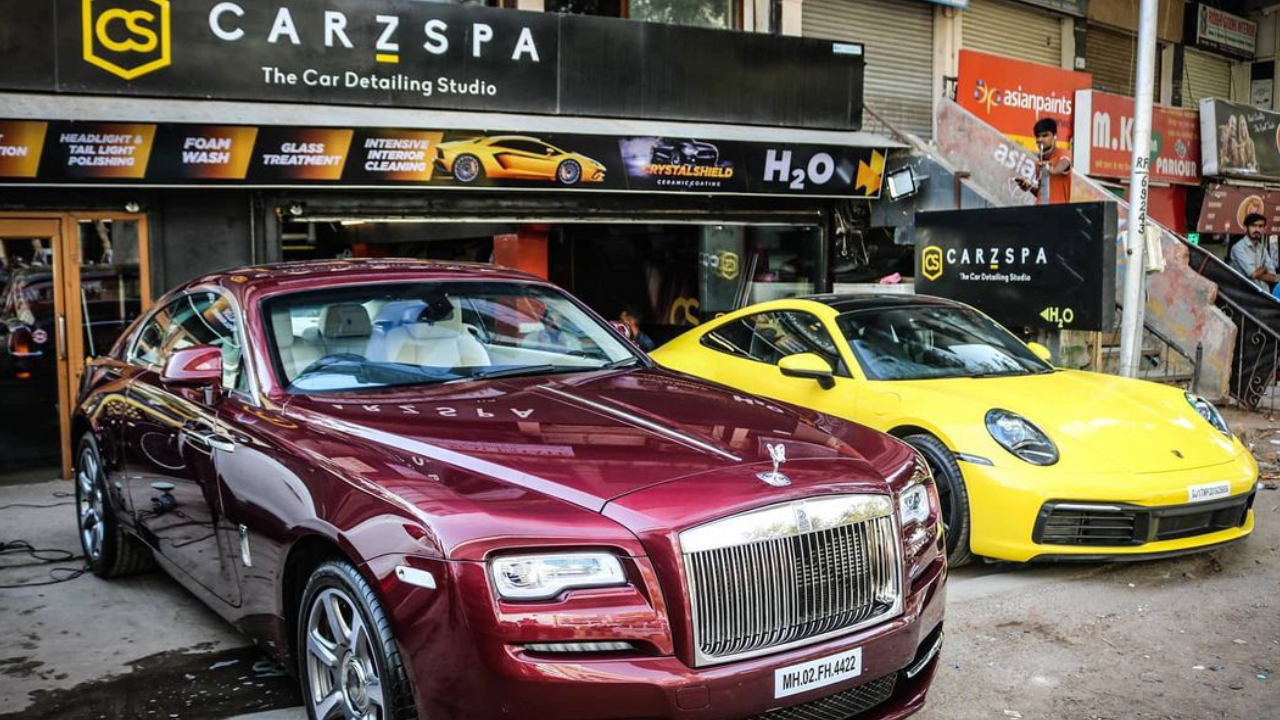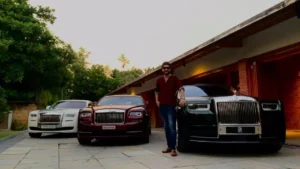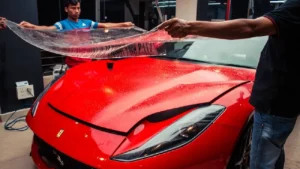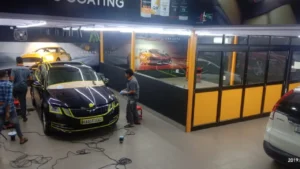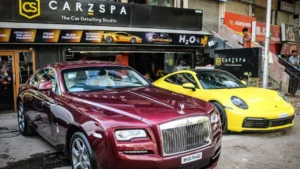Every day, your car faces a silent battle. It’s not against traffic, but against the very environment it operates in. India’s geographically diverse landscape presents a unique triple threat to your vehicle: the scorching UV radiation of a tropical sun, the corrosive mixture of acid rain and urban pollution, and the structural decay accelerated by monsoons and coastal conditions.
For Indian car owners, protecting your vehicle isn’t just about keeping it shiny. It’s about preserving your investment, maintaining structural integrity, and maximizing resale value. The good news? Modern automotive technology offers sophisticated solutions that go far beyond traditional car care methods.
Let’s explore the practical tips that will keep your car looking showroom-fresh and structurally sound for years to come.
Table of Contents
- Tip 1: Combat UV Degradation with Ceramic Coating
- Tip 2: Defend Against Acid Rain and Urban Pollution
- Tip 3: Protect Against Monsoon Water Spots and Mineral Deposits
- Tip 4: Apply Paint Protection Film to High-Impact Areas
- Tip 5: Shield Your Underbody with Anti-Rust Treatment
- Tip 6: Use a Quality Car Cover for Daily Protection
- Tip 7: Practice Smart Parking Habits
- Conclusion
Tip 1: Combat UV Degradation with Ceramic Coating
India’s tropical climate means intense sun exposure year-round, making UV protection essential for every car owner.
- Traditional waxes fall short: They offer only temporary protection, wearing off in weeks and leaving your clear coat vulnerable to oxidation
- UV rays break down paint: The primary cause of paint fading, oxidation, and a chalky, patchy appearance over time
- Dark vehicles suffer more: Heat absorption accelerates premature aging of paint and even causes cracking of plastic trim
- Ceramic coating provides lasting defense: This liquid polymer chemically bonds with your factory paint and hardens into a glass-like protective layer that lasts years, not weeks
- Superior resistance: Ceramic coating resists UV oxidation, repels water with extreme hydrophobicity, and significantly reduces maintenance requirements
- Best for Indian conditions: Delivers the long-lasting, chemical-resistant shield your car deserves in a tropical climate
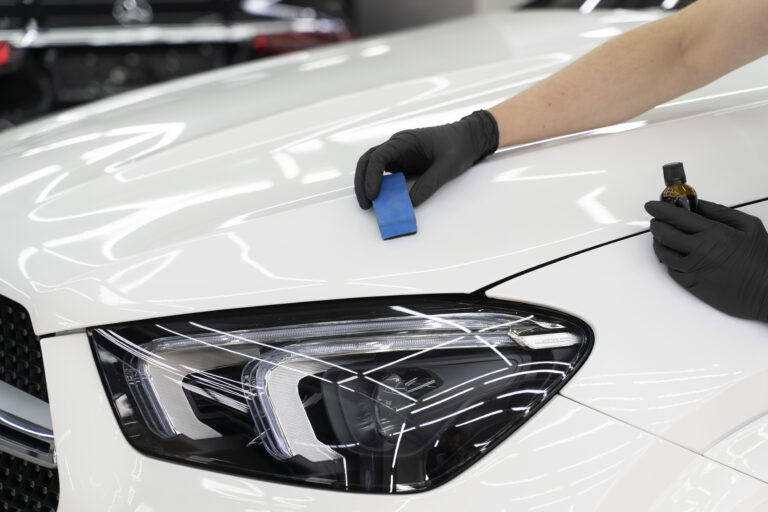
Tip 2: Defend Against Acid Rain and Urban Pollution
Rising pollution in metropolitan cities creates chemical corrosion threats that require active defense strategies.
- Acid rain is a serious threat: Urban smog rich in sulfur dioxide and nitrogen oxides mixes with rainwater to form acids that etch your clear coat
- Stubborn water spots: Acid rain leaves behind concentrated acidic deposits that create irregular, stubborn water spots. Polishing alone cannot remove
- Bird droppings accelerate damage: Highly acidic organic pollutants cause permanent stains when baked onto the surface by the sun
- Tree sap damages paint: Like bird droppings, tree sap creates a rough, sticky paint texture if not removed immediately
- Regular gentle washing prevents damage: Use a pH-neutral shampoo and the two-bucket method to remove contaminants before they cause lasting damage
- Prompt removal is key: The sooner you wash off acidic deposits, the better your paint protection
Tip 3: Protect Against Monsoon Water Spots and Mineral Deposits
While monsoon rains bring relief from the heat, they present seasonal challenges for your paintwork.
- Hard water stains form quickly: When rainwater or tap water evaporates, it leaves behind mineral deposits like calcium and magnesium
- Chalky spots bond permanently: These deposits create a cloudy, rough surface that diminishes your car’s natural gloss and is incredibly difficult to remove
- Road grime creates abrasive slurry: Mud mixed with rain embeds contaminants into the clear coat if not washed off promptly
- Swirl marks and micro-scratches develop: The combination of contaminants accelerates paint damage if left unaddressed
- Prevention is easier than correction: Prompt rinsing after rainfall and gentle drying prevent mineral deposits from setting
- This simple habit saves money: Regular maintenance is far more affordable than dealing with damage after it occurs.
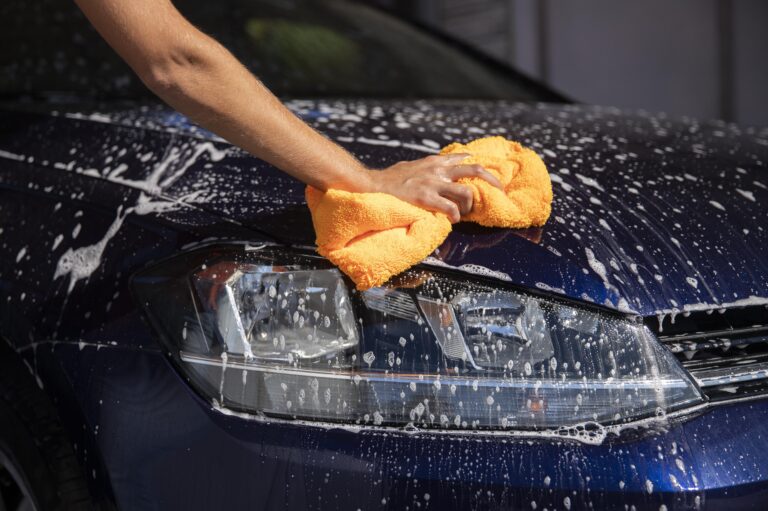
Tip 4: Apply Paint Protection Film to High-Impact Areas
For maximum defense against physical damage, paint protection film (PPF) is an invaluable investment that ceramic coating alone cannot provide.
- Sacrificial layer protection: Transparent thermoplastic urethane film absorbs the impact of stone chips, road debris, minor scratches, and abrasions
- Physical barrier advantage: PPF shields your paint from damage that ceramic coating cannot fully prevent
- Self-healing technology: Modern PPF is often self-healing, meaning minor scratches disappear when exposed to heat from the sun or hot water
- Perpetual flawless surface: The film maintains its appearance automatically, reducing visible wear over time
- Hybrid approach works best: Many car owners apply PPF to high-impact areas like the bonnet, bumpers, and fenders
- Combine with ceramic coating: Coat the entire vehicle, including the PPF, with ceramic coating for enhanced gloss, UV resistance, and hydrophobic properties
- Comprehensive protection strategy: This combination delivers defense against both chemical and physical threats.
Tip 5: Shield Your Underbody with Anti-Rust Treatment
While your car’s paint gets the attention, the underbody faces the greatest risk of long-term, catastrophic damage from rust and corrosion.
- Coastal and monsoon regions face severe threats: Salt-laden air and high humidity dramatically accelerate corrosion in cities like Mumbai, Chennai, and Kolkata
- Constant exposure to corrosive elements: The underbody is exposed to road muck, gravel, and moisture that become prime targets for rust
- Rust is a structural threat: It’s not merely cosmetic—rust can compromise chassis, suspension mounts, exhaust systems, and fuel lines
- Serious consequences of neglect: Structural weakening reduces safety, leads to expensive repairs, and significantly reduces resale value
- Professional underbody coating is essential: Rubberized, bituminous, or polyurethane-based treatments spray onto the entire undercarriage
- Creates protective barrier: The thick, resilient coating seals metal components from water, salt, road debris, and acidic sludge
- Additional benefits: The elastomeric coating dampens road noise and vibrations for a quieter, more comfortable ride
- Timing matters: Apply to new vehicles before rust forms, or have older vehicles inspected and treated after rust removal
Tip 6: Use a Quality Car Cover for Daily Protection
High-tech coatings are long-term investments, but daily habits and protective accessories form the crucial first line of defense.
- Car covers remain highly effective: A high-quality, breathable car cover acts as an excellent sacrificial shield against dust, bird droppings, UV rays, and environmental fallout
- Complements professional treatments: Even when used alongside ceramic coating, covers provide additional protection for parked vehicles
- Market demand confirms effectiveness: High demand for car covers in India reflects practical need for vehicles in outdoor parking situations
- Breathable design is important: Choose covers that allow air circulation to prevent moisture buildup while protecting your car
- Simple, affordable investment: A quality cover is far less expensive than damage repair and extends the effectiveness of professional treatments
- Ideal for outdoor parking: Essential for those without access to garages or covered parking facilities
Tip 7: Practice Smart Parking Habits
Prevention is always easier than correction, and strategic parking significantly reduces environmental threats.
- Covered parking is best: Garages, carports, and underground facilities substantially reduce your vehicle’s exposure to environmental threats
- Use car covers for street parking: If covered parking is unavoidable, use your protective car cover diligently
- Shaded areas provide temporary relief: Parking under trees reduces UV exposure, though remember that tree sap requires prompt removal
- Minimize cumulative damage: Every hour of reduced exposure extends the life of your protective treatments
- Combine multiple strategies: Smart parking combined with protective solutions creates a comprehensive defense system
- Long-term benefits: Consistent parking practices significantly reduce maintenance needs and preserve your investment
Conclusion
India’s environment presents unique challenges for automotive longevity. From UV rays that fade color to salt that corrodes structural components, your vehicle requires a multi-layered defense strategy.
Investing in professional car paint protection through ceramic coating and paint protection film, combined with underbody anti-rust treatment, is no longer a luxury—it’s a practical, high-return investment in your vehicle’s future. By combining these advanced protection solutions with diligent daily habits, you ensure your car not only retains its aesthetic brilliance but also maintains structural strength and maximum resale value.
Protect your car today, and it will serve you reliably for years to come.

